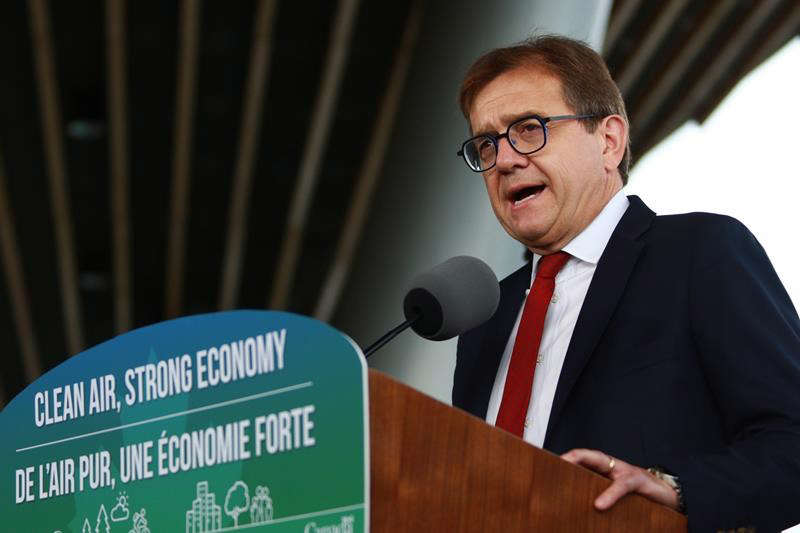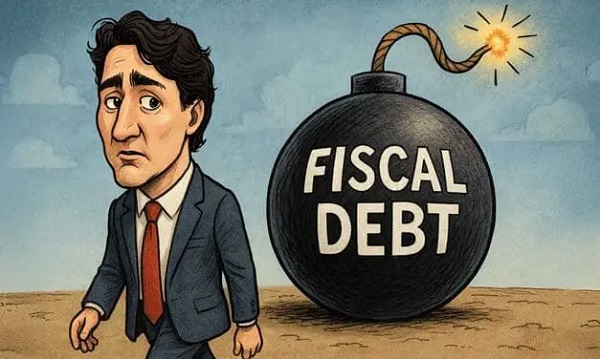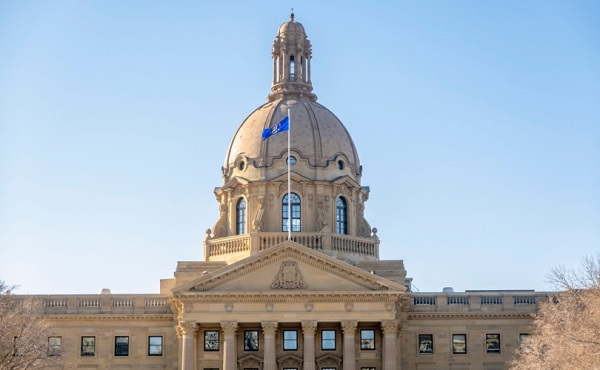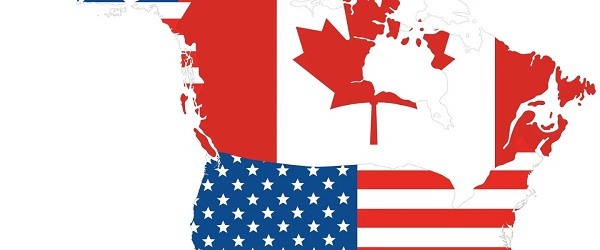Economy
Minister Wilkinson’s flawed crystal ball

From Resource Works
The federal minister of energy and natural resources’ statements are at odds with the energy industry’s leaders and economists.
Meet Canada’s new expert on the global oil-and-gas market, and the world’s future demand for those commodities.
He is (surprise) Jonathan Wilkinson, Canada’s federal minister of energy and natural resources, who has announced this outlook for oil:
“Oil and gas will peak this decade. In fact, oil is probably peaking this year.”
The world oil market now eats up some 102.21 million barrels per day, so Wilkinson’s anticipated peak this year would be around that much.
But that’s not what market-watchers and oil-sector experts see:
- Goldman Sachs Research: “While some prominent forecasters have predicted oil demand will peak by 2030, our researchers expect oil usage will increase through 2034.
“That’s in part because of demand for oil from emerging markets in Asia and demand for petrochemicals. We think peak demand is another decade away.”
- The 2024 outlook of OPEC, the Organization of Petroleum Exporting Countries (12 of the world’s major oil-exporting nations) says simply: “There is no peak oil demand on the horizon.
“For oil alone, we see demand reaching over 120 million barrels a day by 2050, with the potential for it to be higher.”
“What the Outlook underscores is that the fantasy of phasing out oil and gas bears no relation to fact. Combined they make up well over 50% of the energy mix today and are expected to do the same in 2050.”
- In an outlook for 2024-2050, one scenario from energy giant BP sees this: “Oil continues to play a major role in the global energy system over the first half of the outlook, with the world consuming between 100-80 Mb/d of oil in 2035.
“Oil demand declines over the outlook but continues to play a significant role in the global energy system for the next 10-15 years. This requires continuing investment in upstream oil (and natural gas).”
- Greg Ebel, CEO of Calgary-based Enbridge, says global oil consumption will be “well north” of 100 million barrels per day by 2050 — and could exceed 110 million barrels.
“You continue to see economic demands, and particularly in the developing world, people continue to say lighter, faster, denser, cheaper energy works for our people. . . And that’s leading to more oil usage.”
- Even the optimistic International Energy Agency sees global demand increasing to 105.4 million barrels a day by 2030.
So take Minister Wilkinson’s crystal-ball outlook, of oil “probably” peaking this year, with at least a barrel of salt.
Then there’s Wilkinson’s contention that continuing to rely on oil and gas “will leave Canada uncompetitive and poorer on a go-forward basis.”
If so, why did his why his government invest $4.5 billion of your taxpayer money in 2018 to buy the Trans Mountain oil pipeline system and its TMX expansion?
Finance Minister Chrystia Freeland: “Because we knew it was a serious and necessary investment — one that is in the national interest and will make Canada and the Canadian economy more sovereign and more resilient.”
And from Prime Minister Trudeau: “By moving forward with TMX, we’re creating jobs, opening new markets, accelerating our clean energy transition, and generating new avenues for Indigenous economic prosperity. . . .
“This project isn’t about expanding our production. It’s about expanding our options. TMX will reduce our reliance on our single customer, the United States, and give us access to the growing markets of Asia.”
All of that seems to have escaped Minister Wilkinson and his flawed crystal ball.
Business
Trans Mountain executive says it’s time to fix the system, expand access, and think like a nation builder

Mike Davies calls for ambition and reform to build a stronger Canada
A shift in ambition
A year after the Trans Mountain Expansion Project came into service, Mike Davies, Senior Director of Marine Development at Trans Mountain, told the B.C. Business Summit 2025 that the project’s success should mark the beginning of a new national mindset — one defined by ambition, reform, and nation building.
“It took fifteen years to get this version of the project built,” Davies said. “During that time, Canadian producers lost about $50 billion in value because they were selling into a discounted market. We have some of the world’s largest reserves of oil and gas, but we can only trade with one other country. That’s unusual.”
With the expansion now in operation, that imbalance is shifting. “The differential on Canadian oil has narrowed by about $13 billion,” he said. “That’s value that used to be extracted by the United States and now stays in Canada — supporting healthcare, reconciliation, and energy transformation. About $5 billion of that is in royalties and taxes. It’s meaningful for us as a society.”
Davies rejected the notion that Trans Mountain was a public subsidy. “The federal government lent its balance sheet so that nation-building infrastructure could get built,” he said. “In our first full year of operation, we’ll return more than $1.3 billion to the federal government, rising toward $2 billion annually as cleanup work wraps up.”
At the Westridge Marine Terminal, shipments have increased from one tanker a week to nearly one a day, with more than half heading to Asia. “California remains an important market,” Davies said, “but diversification is finally happening — and it’s vital to our long-term prosperity.”
Fixing the system to move forward
Davies said this moment of success should prompt a broader rethinking of how Canada approaches resource development. “We’re positioned to take advantage of this moment,” he said. “Public attitudes are shifting. Canadians increasingly recognize that our natural resource advantages are a strength, not a liability. The question now is whether governments can seize it — and whether we’ll see that reflected in policy.”
He argued that governments have come to view regulation as a “free good,” without acknowledging its economic consequences. “Over the past decade, we’ve seen policy focus almost exclusively on environmental and reconciliation objectives,” he said. “Those are vital, but the public interest extends well beyond that — to include security, economic welfare, the rule of law, transparency, and democratic participation.”
Davies said good policy should not need to be bypassed to get projects built. “I applaud the creation of a Major Projects Office, but it’s a disgrace that we have to end run the system,” he said. “We need to fix it.”
He called for “deep, long-term reform” to restore scalability and investment confidence. “Linear infrastructure like pipelines requires billions in at-risk capital before a single certificate is issued,” he said. “Canada has a process for everything — we’re a responsible country — but it doesn’t scale for nation-building projects.”
Regulatory reform, he added, must go hand in hand with advancing economic reconciliation. “The challenge of our generation is shifting Indigenous communities from dependence to participation,” he said. “That means real ownership, partnership, and revenue opportunities.”
Davies urged renewed cooperation between Alberta and British Columbia, calling for “interprovincial harmony” on West Coast access. “I’d like to see Alberta see B.C. as part of its constituency,” he said. “And I’d like to see B.C. recognize the need for access.”
He summarized the path forward in plain terms: “We need to stem the exit of capital, create an environment that attracts investment, simplify approvals to one major process, and move decisions from the courts to clear legislation. If we do that, we can finally move from being a market hostage to being a competitor — and a nation builder.”
Business
Canada is still paying the price for Trudeau’s fiscal delusions

This article supplied by Troy Media.
 By Lee Harding
By Lee Harding
Trudeau’s reckless spending has left Canadians with record debt, poorer services and no path back to a balanced budget
Justin Trudeau may be gone, but the economic consequences of his fiscal approach—chronic deficits, rising debt costs and stagnating growth—are still weighing heavily on Canada
Before becoming prime minister, Justin Trudeau famously said, “The budget will balance itself.” He argued that if expenditures stayed the same, economic growth would drive higher tax revenues and eventually outpace spending. Voila–balance!
But while the theory may have been sound, Trudeau had no real intention of pursuing a balanced budget. In 2015, he campaigned on intentionally overspending and borrowing heavily to build infrastructure, arguing that low interest rates made
it the right time to run deficits.
This argument, weak in its concept, proved even more flawed in practice. Postpandemic deficits have been horrendous, far exceeding the modest overspending initially promised. The budgetary deficit was $327.7 billion in 2020–21, $90.3 billion the year following, and between $35.3 billion and $61.9 billion in the years since.
Those formerly historically low interest rates are also gone now, partly because the federal government has spent so much. The original excuse for deficits has vanished, but the red ink and Canada’s infrastructure deficit remain.
For two decades, interest payments on federal debt steadily declined, falling from 24.6 per cent of government revenues in 1999–2000 to just 5.9 per cent in 2021–22—thanks largely to falling interest rates and prior fiscal restraint. But that trend has reversed. By 2023–24, payments surged past 10 per cent for the first time in over a decade, as rising interest rates collided with record federal debt built up under Trudeau.
Rising debt costs are only part of the story. Federal revenues aren’t what they could have been because Canada’s economy has stagnated. High immigration, which drives productivity down, is the only thing masking our lacklustre GDP growth. Altogether, Canada was 35th among 38 countries in the Organization for Economic Co-operation and Development (OECD) for per capita GDP growth from 2014 to 2022 at just 0.2 per cent. By comparison, Ireland led at 45.2 per cent, followed by the U.S. at 20.8 per cent.
Why should a country like Canada, so blessed with natural resources and knowhow, do so poorly? Capital investment has fled because our government has made onerous regulations, especially hindering our energy industry. In theory, there’s now a remedy. Thanks to new legislation, the Carney government can extend its magic sceptre to those who align with its agenda to fast-track major projects and bypass the labyrinth it created. But unless you’re onside, the red tape still strangles you.
But as the private sector withers under red tape, Ottawa’s civil service keeps ballooning. Some trimming has begun, rattling public sector unions. Still, Canada will be left with at least five times as many federal tax employees per capita as the U.S.
Canada also needs to ease its hell-bent pursuit of net-zero carbon emissions. Hydrocarbons still power the Canadian economy—from vehicles to home heating—and aren’t practically replaceable. Canada has already proven that chasing net zero leads to near-zero per capita growth. Despite high immigration, the OECD projects Canada to have the lowest overall GDP growth between 2021 and 2060.
The Nov. 4 release of the federal budget is better late than never. So would be a plan to grow the economy, slash red tape and eliminate the deficit. But we’re unlikely to get one.
Trudeau may be gone, but his legacy of fiscal recklessness is alive and well.
Lee Harding is a research fellow with the Frontier Centre for Public Policy.
Troy Media empowers Canadian community news outlets by providing independent, insightful analysis and commentary. Our mission is to support local media in helping Canadians stay informed and engaged by delivering reliable content that strengthens community connections and deepens understanding across the country
-

 Alberta1 day ago
Alberta1 day agoB.C. would benefit from new pipeline but bad policy stands in the way
-

 Uncategorized2 days ago
Uncategorized2 days agoTrump Admin Establishing Council To Make Buildings Beautiful Again
-

 Economy1 day ago
Economy1 day agoTop Scientists Deliberately Misrepresented Sea Level Rise For Years
-

 Energy20 hours ago
Energy20 hours agoCAPP calls on federal government to reset energy policy before it’s too late
-

 International2 days ago
International2 days agoUS Deploys Gerald Ford Carrier Strike Group To Target Cartels
-

 Frontier Centre for Public Policy2 days ago
Frontier Centre for Public Policy2 days agoChurches Are All That Stands Between Canada And Tyranny
-

 Alberta2 days ago
Alberta2 days agoAlberta introduces bill allowing province to reject international agreements
-

 Business20 hours ago
Business20 hours agoTrump Raises US Tariffs on Canadian Products by 10% after Doug Ford’s $75,000,000 Ad Campaign










